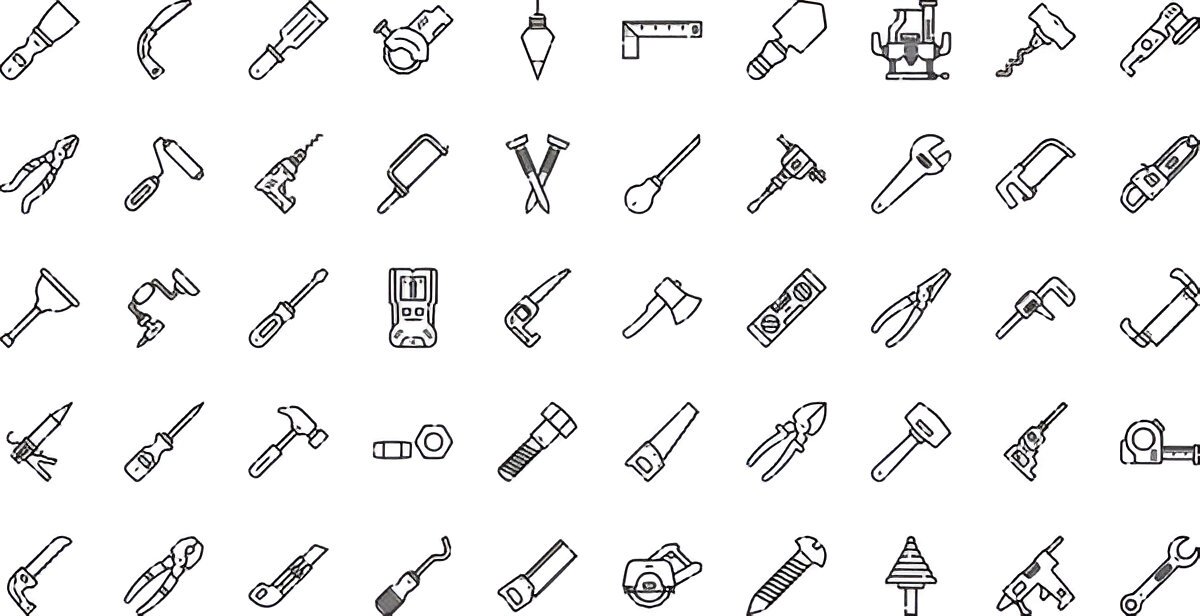Lineman work is one of the most demanding trades out there. Linemen need strong, reliable tools for their work. They climb poles, install power lines, and work underground. These tools must not fail on the job.
What hand tools does a lineman use? While power tools are common in the trade, hand tools remain at the center of every lineman’s toolkit. These tools provide control, strength, and safety—and every piece has its place in the field.
Lineman Hand Tools: What’s in the Belt?
A standard lineman tool kit contains tough, tested hand tools that professionals designed for high-risk, high-reward tasks. Long nose pliers are essential for reaching tight spaces and twisting wire.
People use cable cutters to slice through thick electrical lines without hesitation. Bolt cutters? A must-have for snapping through hardware quickly and cleanly. When you need brute force, nothing matches the impact of a solid lineman’s hammer.
Skinning knives are also a staple—used to strip insulation from wires with precision. Designers create these knives with durable handles and sharp edges to reduce slip and cut time. Most experienced linemen keep at least two in rotation.
Gear That Goes Beyond Tools
Beyond hand tools, linemen rely heavily on lineman accessories and lineman equipment to stay safe and productive. One important tool is the hot stick.
It is a fiberglass pole that is insulated. Workers use it to handle live electrical lines safely from a distance. Pair that with insulated rubber gloves, and you’ve got the basic defense against high voltage.
Lineman supply kits also include high-traction boots, flame-resistant clothing, and tool pouches for quick access in the air. Whether you’re stocking up for the first time or upgrading your current setup, quality matters. Newer designs in lineman tools and equipment prioritize ergonomics, better grip, and lighter weight without losing durability.
Aerial and Underground: Tools for Every Environment
Whether working high up or deep below, linemen need tools suited to their environment. Aerial lineman tools often include pole climbing gear, safety harnesses, and speed systems for quicker line access. These systems reduce fatigue and increase mobility—especially important when working dozens of feet in the air.
In contrast, underground lineman tools focus more on cable pulling, trenching, and handling ground-level components. Strong shovels, duct rodders, and pulling grips are common here. It’s all about getting the job done safely where visibility and space are limited.

What Power Tools Do Lineman Use?
While hand tools are key, power tools still play a big role. Workers often use cordless impact drivers, hydraulic crimpers, and battery-powered cutters on the job.
They help make tasks faster that would take longer by hand. They also reduce muscle fatigue. This is especially helpful when working with a lot of cable or tightening hardware at heights.
New lineman tools are being made with smarter features. These include battery indicators, overload protection, and tool tracking systems. These upgrades matter when time and safety are on the line.
Lineman Apprentice Tool List: Getting Started Right
Starting out in the trade? Here’s a basic lineman apprentice tool list:
- Lineman’s hammer
- Long nose pliers
- Skinning knives
- Cable cutters
- Bolt cutter
- Insulated rubber gloves
- Tool pouch or belt
- Measuring tape
- Safety glasses
- Hard hat
These basics can be found in most starter lineman tool kits and will cover most entry-level tasks. As skills grow, so will your gear.
Lineman Tools List: The Essentials
No two linemen have identical kits, but here’s a solid lineman tools list used across the trade:
- Long nose pliers
- Bolt cutters
- Cable cutters
- Skinning knives
- Lineman’s hammer
- Hot sticks
- Insulated gloves
- Speed systems
- Climbing gear
- Tool belts and holders
All these items are part of lineman tools and equipment. Workers use them every day to do their jobs right.

FAQs
What tools do you need as a lineman?
You’ll need a combination of cutting tools, gripping tools, hammers, protective gear, and electrical safety equipment. Lineman hand tools and basic power tools should be part of every kit.
What personal protective equipment do linemen use?
Hard hats, flame-resistant clothing, insulated rubber gloves, climbing harnesses, and safety glasses are common. Hot sticks are also critical for working on live lines.
What does a lineman need?
A lineman needs sharp focus, physical strength, and the right tools: from skinning knives to speed systems, everything must be ready for harsh conditions..
What supplies do you need for lineman school?
Expect to need a full lineman tool kit, including lineman’s hammers, cutters, gloves, climbing gear, and PPE. Many schools provide a list in advance.
If you’re serious about staying sharp in the trade—or just start—having the right lineman tools makes all the difference. Whether it’s underground, aerial, or transmission work, your gear needs to be as strong as you are.
For more insights and expert picks on industrial gear, check out Industrial Tools Hub. You’ll find detailed breakdowns on the best lineman tools, kits, and accessories built to last.
Looking for more on lineman supply or gear upgrades? Visit https://industrial-tools-hub.com/ to stay ahead of the curve.
